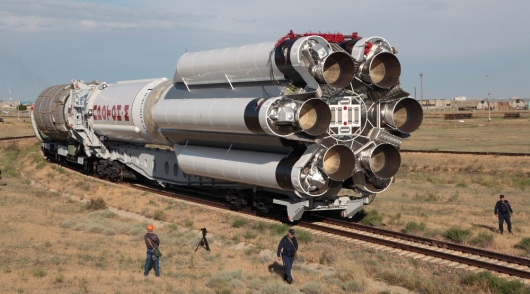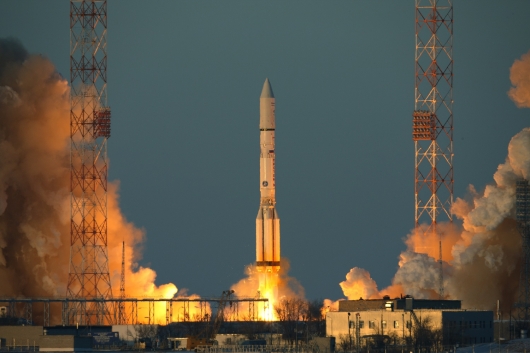The carrier rocket “proton” will soon go on a well-deserved retirement
Half a century in the space clip! Rocket – survivor “proton” is retiring

The Soviet rocket “proton”, inherited by modern Russia after the collapse of the Soviet Union, which became the main workhorse medium-lift our space industry, retiring after half a century is unique continuous production cycle and upgrades.
53 years ago was made the first launch. The carrier rocket “proton” orbited the first in history a space station. She served blocks, and delivers important cargo into orbit for the Soviet and Russian space stations. The history of this iconic project has a lot of other important milestones, but there is nothing eternal under the Moon.

Highly toxic brands of fuel, the spaceport outside of Russia designed for launches of this type of missiles, and sudden competition from the American project SpaceX – all these factors determined the fate of the “Proton”.
Officially known as the “Universal rocket” UR-500 “proton” started space career in 1962 as a two-stage rocket heavy class. The main task is the removal of spacecraft into Earth orbit and further into space. Under military threat, one such missile could carry a 150-megaton nuclear warhead weighing 40 tons.
In 1965, the draft was revised, becoming a three-stage missile, the aim of which was the speedy sending astronauts to the Lunar orbit.

But circling the moon did not happen. Three years later, the Americans withdrew manned spacecraft Apollo 8, having its first around the moon that made impractical the use of missiles to the target. The mission obsolete, and the missile for many decades was to the Soviet Union the same “working space horse” that can take over the load that was not able another legendary spacecraft – rocket “Soyuz”. Space station, large multi-ton satellites and probes to the moon, Venus and Mars.
“Proton” was extremely flexible and tenacious booster. He could carry on his mighty shoulders to 22.8 metric tons.
In the middle of 1990-ies Russia began to use the proton for commercial launches. It has become a successful source of income for the industry. Alas, in recent years the problem of quality control and competition with the SpaceX Falcon 9 rocket that can carry about the same payload into low earth orbit, has seriously affected the competitiveness of Proton.
In addition, the proton uses nitrogen tetroxide and unsymmetrical dimethylhydrazine as propellants. Fuel is very poisonous, dangerous and poses a threat to the environment. Most modern rockets use a much less dangerous fuels, including the replacement of the “Proton” rocket “Angara”, which uses the same fuel RP-1 (essentially purified kerosene, similar to jet fuel) of the rocket “Soyuz”. They have oxidizers – liquid oxygen.

Finally, space flights from Baikonur cosmodrome will be gradually discontinued. The main spaceport will be Plesetsk. Due to the Northern location of Plesetsk, he was considered unfit for geosynchronous orbit, but plans for launching spacecraft in geosynchronous loop around the moon solve the problem.
Proton was a true workhorse and one of the most successful rocket-carriers. She deserved retirement with honors. The future is in the continuation of scientific work of space exploration for new types of missiles.
